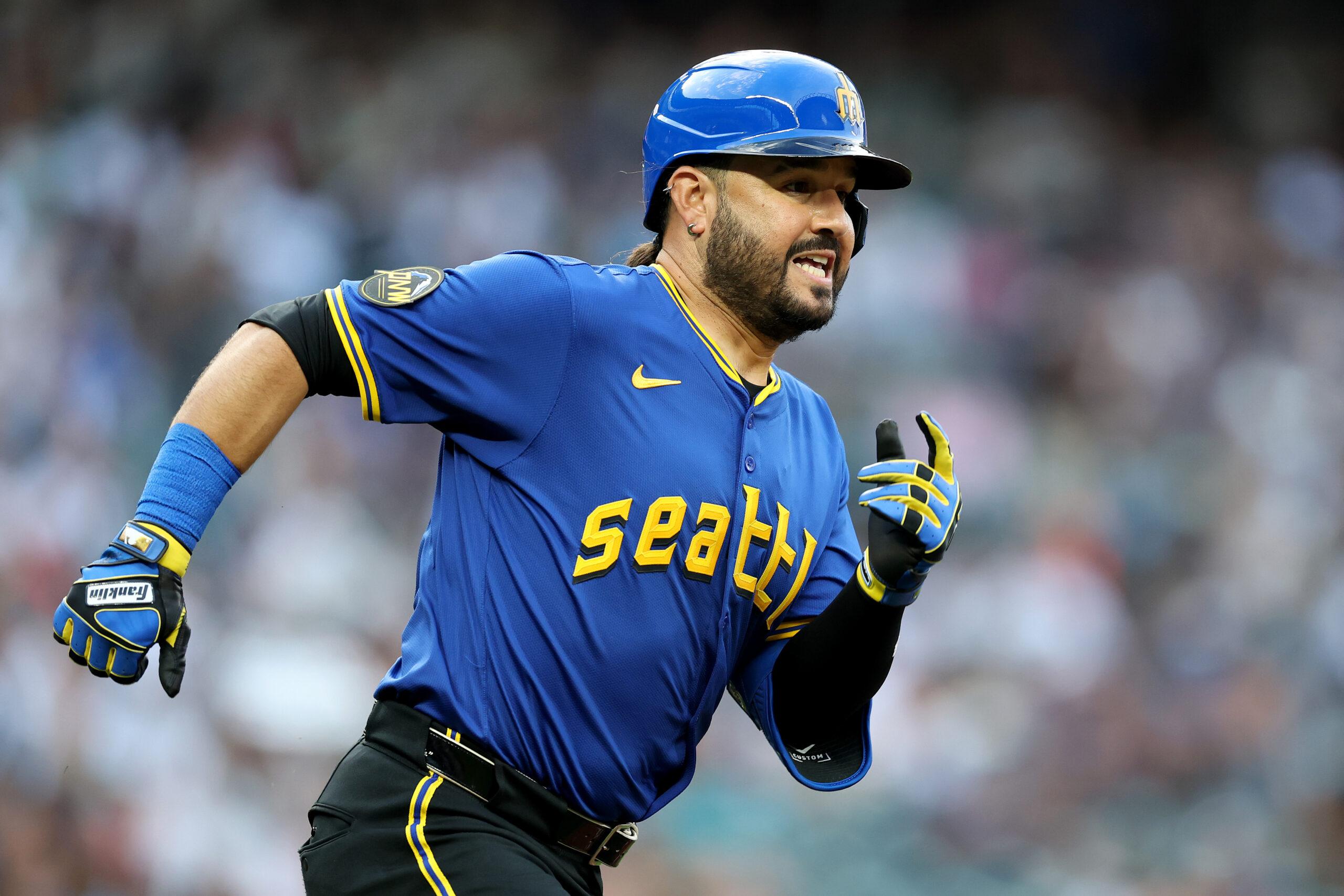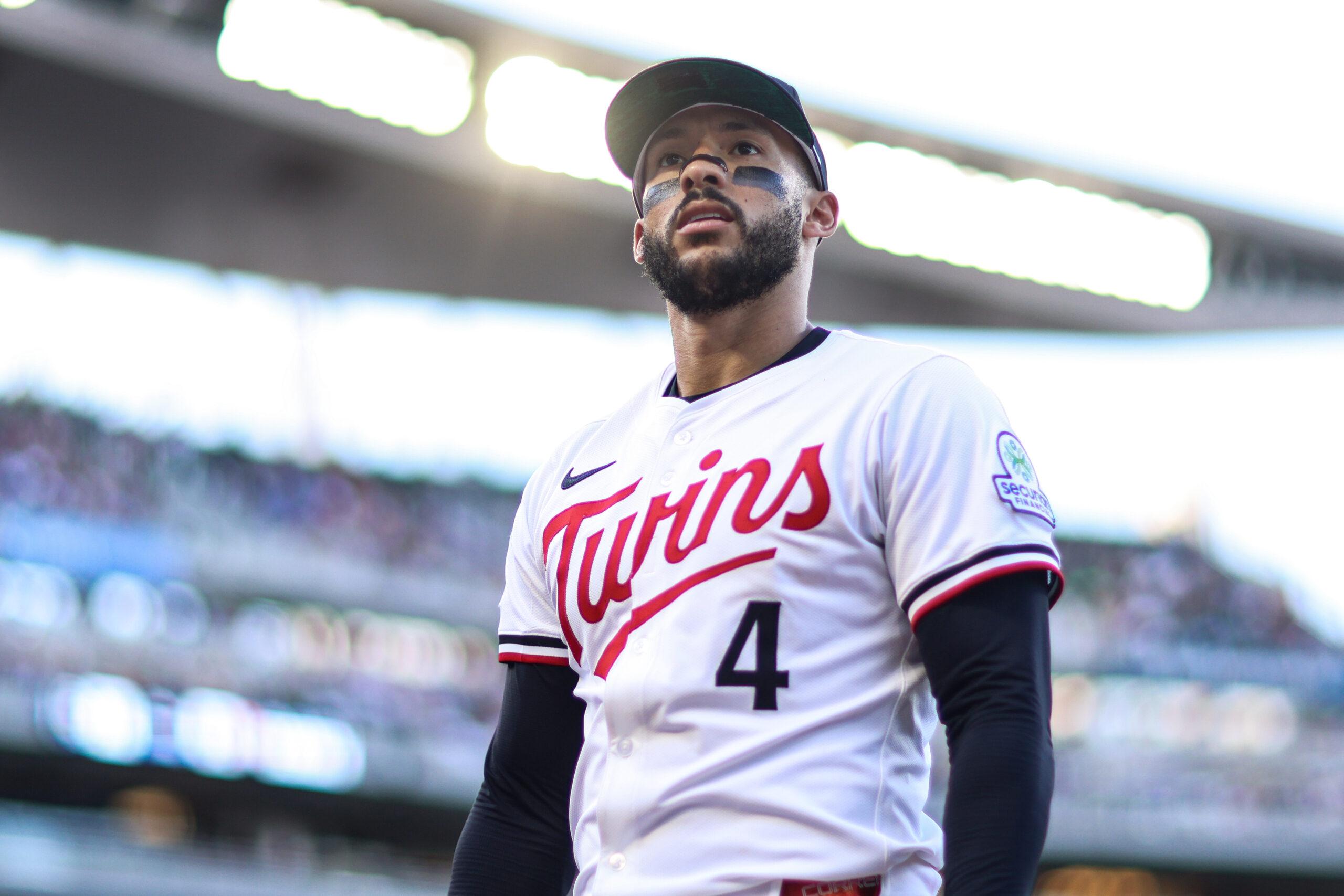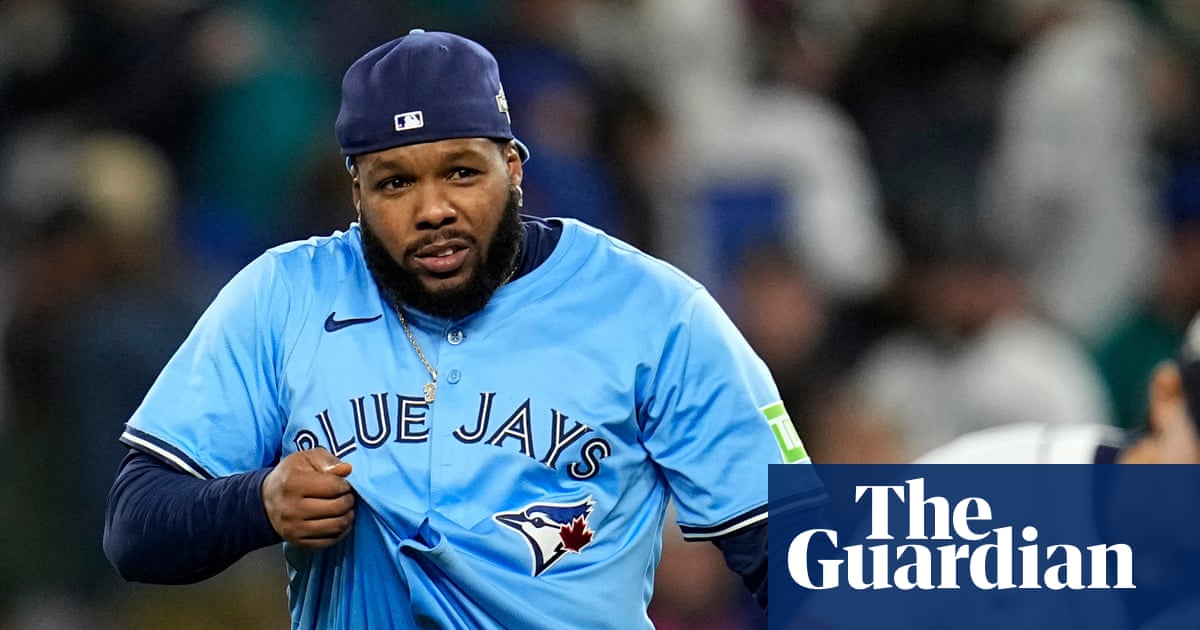San Diego Padres general manager A.J. Preller is living out the fantasy of every MLB the Show dynasty-mode player. The 2025 MLB trade deadline has come and gone, and once again, no one in the sport matched his relentless dealmaking. Preller is that guy in your fantasy baseball league who messages you at any hour, convinced he’s one move away from hanging a banner. His freewheeling approach isn’t without its critics, but in a league where prospect capital and team control are treated like gold, Preller’s willingness to pay premium prices to acquire top-end talent is refreshing.
Is he the winner of the deadline? The loser? History says that he’s likely somewhere in the middle. The Padres were at the heart of the biggest move of the 2025 deadline, as they dealt the no. 3 prospect in baseball, Leo de Vries, to the Athletics for star closer Mason Miller and starter JP Sears. Preller also emptied out the rest of the farm for catcher Freddy Fermin, first baseman Ryan O’Hearn, and outfielder Ramón Laureano and ultimately held on to Dylan Cease and Robert Suarez. He rebuilt the entire bottom half of the Padres’ order and added to an already elite bullpen as San Diego—currently just three games back in the NL West—tries to chase down the Dodgers.
This is, after all, the same general manager who traded for Juan Soto in 2022 and then traded him away before the 2024 season. Last year, Cease, Luis Arráez, Jason Adam, and Tanner Scott all joined the roster. This is simply who Preller is. For better or worse, he is the chaos agent that baseball needs at the deadline.
He wasn’t the only one to bring the juice this year, though. And while Preller’s approach defies easy categorization, it’s time to declare the winners and losers of the 2025 MLB trade deadline.
Winner: The Minnesota Twins
If you’re going to sell, you may as well go all the way, and the Twins did just that. Minnesota moved 11 players at the deadline, making it the busiest seller in baseball—by far. Most expected it to part with at least one late-inning arm, but the front office went a step further, trading both Jhoan Duran (to Philadelphia) and Griffin Jax (to Tampa Bay). Middle relievers Louis Varland, Brock Stewart, and Danny Coulombe were also shipped out, meaning that the Twins might need to hold open tryouts just to fill a bullpen for Friday’s game against Cleveland.
Position players weren’t spared from the fire sale, either. Super-utility man Willi Castro, infielder Ty France, and outfielder Harrison Bader, all on expiring deals, were flipped for various lottery ticket prospects in smart, forward-thinking moves.
But the stunner came when Minnesota agreed to eat a portion of Carlos Correa’s contract to send him back to Houston. The Twins essentially admitted that the deal had become a sunk cost and off-loaded a player owed major money through at least 2028. We’ll get into what this means for the Astros later, but for the Twins, it was a bold step toward reshaping a stagnant roster.
Loser: Twins Fans
Duran wasn’t just the guy with the viral entrance music—he was a homegrown flamethrower who’d developed into one of baseball’s most electric pitchers. He helped snap the franchise’s 18-game playoff losing streak with back-to-back saves in the 2023 wild-card round, cementing his status as a fan favorite. Trading away a player of that caliber, with 2.5 years of team control remaining, sends a clear message that the Twins are taking a major step back.
It’s a jarring turnaround for the team, which came into this season as a cofavorite to win the American League Central. Only two offseasons ago, Minnesota’s front office had signaled a desire to win now when it signed Correa to a surprising big-money deal. Now, off-loading his contract and shedding salaries in the bullpen is a retreat, not a reload.
That’s a tough pill to swallow for the fan base, which had waited two decades for a postseason win, especially since the future is further complicated by the fact that the franchise is up for sale. The product on the field might recover eventually—the Twins acquired some MLB-ready starting pitching in Taj Bradley and Mick Abel, as well as top-60 prospect in catcher Eduardo Tait—but it’s always painful when a team makes this sort of calculation.

Eugenio Suárez
Winner: The Seattle Mariners Offense
The Mariners have never struggled to find pitching. Their rotation is one of the deepest in baseball, and the Matt Brash–Andrés Muñoz duo at the back end of the bullpen is as good as any in baseball. Run prevention hasn’t been the issue for the Mariners, who sit at 58-52, 4.5 games behind the Astros. Scoring, on the other hand …
With catcher Cal Raleigh in the midst of a historic season, general manager Jerry Dipoto saw an opening and went for it. In the wide-open American League, Seattle addressed its long-standing offensive shortcomings in a big way, adding serious firepower in first baseman Josh Naylor and prized deadline bat Eugenio Suárez.
Like Raleigh, Suárez ranks in the top five in MLB in home runs this year, and together they’ll anchor a now dangerous lineup. With steady veterans J.P. Crawford, Jorge Polanco, and Randy Arozarena, plus newfound pop in the middle of the order, the Mariners might have the most well-rounded offense in the American League. The team has long leaned on its arms, but the bats may finally be ready to carry their weight in October.
Loser: The Central Contenders
The unexpected and extraordinary success of the Brewers and Tigers has been one of the best story lines of the 2025 season … which makes their quiet trade deadline all the more puzzling.
Milwaukee added just two pieces: starter Jordan Montgomery (who’s out for the year) and reliever Shelby Miller (currently on a throwing program as he works his way back from injury). The franchise has made the playoffs five times since 2018 but has struggled to advance in October, so this deadline feels like a missed opportunity to upgrade the roster, which still has holes. Miller might help, but he’s far from a sure thing given his flexor tendon strain.
Detroit was at least active, but I have my doubts about the names they acquired. Do you really want Charlie Morton or Chris Paddack starting a playoff game in 2025? Is Kyle Finnegan a lockdown closer for a World Series contender? And is Rafael Montero really a bankable high-leverage arm? Credit to the Tigers for not sitting on their hands on Thursday, but the team still has major question marks on the mound.
Meanwhile, the Cubs’ deadline was even more confusing. With Kyle Tucker in a walk year and Matt Boyd enjoying a career renaissance, this should have been the time to push their chips in. Instead, Chicago came away with a solid utility man (Willi Castro), a middle reliever (Andrew Kittredge), and a back-end starter (Michael Soroka). That’s the kind of deadline you have when you’re clinging to contention, not when you’re trying to win a division and make a playoff run.
Winner: The Closer Market
With several teams aggressively pursuing top-end bullpen talent, this trade deadline became a high-leverage arms race. The Yankees added flamethrower Camilo Doval from the Giants and closer David Bednar from Pittsburgh. With Devin Williams already on the roster, New York now has three pitchers who were dominant National League closers at some point in the past two years. Across town, the Mets chased top-end bullpen help to supplement Edwin Díaz, adding closer Ryan Helsley, setup man Tyler Rogers, and the enigmatic Gregory Soto. The Phillies traded two of their top six prospects to Minnesota for 2.5 years of Duran, Preller broke the bank for Mason Miller, and the Tigers also added Finnegan from the Nationals.
Playoff baseball is increasingly defined by late-game matchups and bullpen usage, and this year saw both high demand for and a high supply of reliable relievers. Still, because it’s a notoriously volatile position, now we’ll get to see which relievers flame out on their new teams and which thrive.
Loser: The Outfield Market
After Preller’s blockbuster for Miller and Correa’s return to Houston, the most shocking moment of the 2025 trade deadline was when 6 p.m. ET passed and Luis Robert Jr. was still on the White Sox. It’s starting to seem like Chicago is holding him hostage on the South Side.
Robert has a $20 million club option for 2026 that almost certainly won’t be picked up, likely making him a free agent this winter. Yet, despite the impending end of the road for Robert and the White Sox and significant trade buzz entering Thursday, the White Sox reportedly held to their asking price.
On one hand, it’s understandable. Robert is incredibly talented. But on the other hand, he has a long injury history and an inconsistent track record, and his team doesn’t seem to have any sort of big-picture plan. Selling low would have been better than losing him for nothing, which is now the most likely outcome.
The Padres, Phillies, and Mets all needed outfield help. All three pivoted elsewhere, choosing less talented but perhaps more dependable options: Laureano, Bader, and Cedric Mullins, respectively. All are solid additions, but none are true needle movers.
Most of the top bats dealt this year were infielders. Between Robert and the Guardians’ Steven Kwan, the outfield market had potential, but instead, it fizzled.

Carlos Correa
Winner: Reunions
There’s something undeniably nostalgic and satisfying about a good reunion. The 2025 deadline gave us two that could shape the AL pennant race.
First, Seattle reacquired Suárez, less than two years after dealing him to Arizona.
And second, Correa waived his no-trade clause to return to Houston. The former no. 1 pick and Houston playoff hero is back with the team that drafted him, although his role will be different now. He will play third base instead of shortstop, and his career-low .704 OPS may drop him lower in the Astros lineup than he’s used to. At 30, Correa has a lot of miles on his body and isn’t the same player he once was.
Still, the fit makes sense. Isaac Paredes’s likely season-ending injury left Houston scrambling for help at third, and Correa brings familiarity with the team and October experience. His second act in Houston almost certainly won’t match his first, but I’m already penciling him in for a signature October moment.
Loser: The Los Angeles Dodgers’ Bullpen
The Dodgers’ starting rotation is finally getting healthy: Tyler Glasnow is back, Shohei Ohtani is building up his workload, and Blake Snell is set to return this weekend. But the Dodgers won the World Series in 2024 in large part because of their dominant bullpen. Right now, that unit doesn’t look like a clear strength. L.A.’s lead over San Diego is just three games, and the loss of Tanner Scott to injury further shuffles Dave Roberts’s bullpen hierarchy. It was a surprisingly quiet deadline for the Dodgers, who added Brock Stewart as a middle reliever as well as platoon outfielder Alex Call.
The Dodgers entered the deadline 21st in bullpen ERA and 13th in FIP. The Padres and Mets both look like clearly better units on paper in the likely NL playoff field. For a team with championship expectations, a quiet deadline could echo loudly in October.
Loser: The Fence-Sitters
The Guardians didn’t push their chips in. They didn’t cash out, either. They sat squarely on the fence, staring at both sides like a bettor checking the odds but refusing to place a wager. (OK, maybe that’s a good thing for them.) But now what? Cleveland is only three games out of a playoff spot but currently sits at .500, with a minus-29 run differential. We’ll never know exactly how the Emmanuel Clase suspension and ongoing investigation affected their deadline plans, but the Guardians are stuck in purgatory yet again.
Then there are the Angels. The team has real young talent right now, as Zach Neto, Jo Adell, Logan O’Hoppe, and Nolan Schanuel could be the semblance of a new offensive core as Mike Trout continues to age. It’s a legitimately good offense, but their pitching isn’t deep enough to turn the Halos into a playoff team.
The Angels came out aggressive and traded for multiple middle relievers in Andrew Chafin and Luis García. Then they added utility man Oswald Peraza from the Yankees. It’s a series of small moves that do little to improve the Angels, who have minuscule odds of making the playoffs. As painful as it is for the fan base, at least the Twins’ front office committed to something, unlike their fellow mediocre American League counterparts.
Anthony Dabbundo
Anthony Dabbundo is a sports betting writer and podcast host featured on The Ringer Gambling Show, mostly concentrating on the NFL and soccer (he’s a tortured Spurs supporter). Plus, he’s a massive Phillies fan and can be heard talking baseball on The Ringer’s Philly Special. Also: Go Orange.Source link

